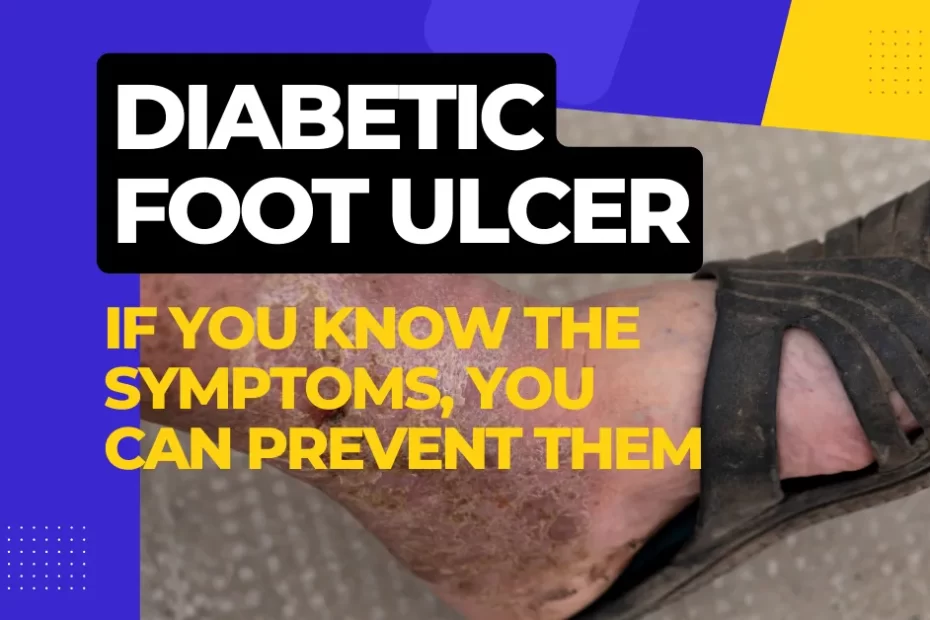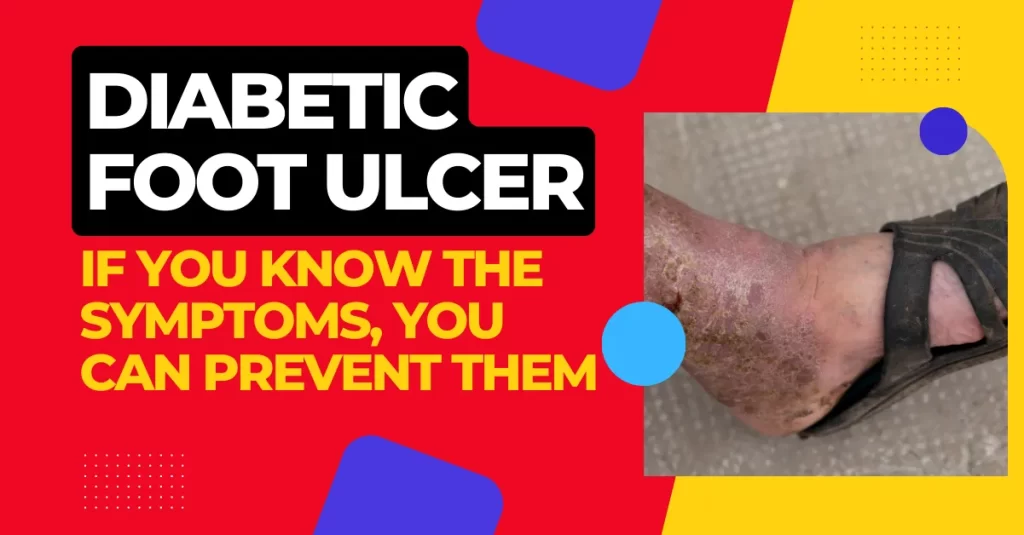Last updated on July 29th, 2023 at 12:39 pm
Diabetes can lead to a number of complications, including foot ulcers. These ulcers can develop when there is damage to the nerves or blood vessels in the feet, which can lead to poor circulation, numbness, and a decreased ability to heal.
Type 2 diabetes is a chronic condition characterized mainly by unstable blood sugar levels succeeding in producing too little insulin or not responding well to the insulin made by your pancreas, which leads to high blood sugar.
Normally, insulin helps regulate blood sugar levels – the main type of sugar (glucose) found in the blood. But without proper regulation, blood sugar can rise too high, causing symptoms such as frequent urination, blurred vision, increased thirst and hunger, fatigue, weight loss, numbness, and tingling in the hands and feet
Many of the signs that blood sugar levels are running rampant can show up in your feet.
Early detection of any skin lesions (such as blisters) could help prevent them from becoming serious medical issues.
It’s important to keep an eye out for signs of skin infections in your feet because they may develop into serious conditions if not treated promptly. Foot pain can be caused by several factors.
Warning Signs of Diabetic Foot Ulcers You Shouldn't Ignore
Here are some warning signs to watch out for that may indicate the development of diabetic foot ulcers:
Changes in skin color or temperature: If your feet are consistently cold or have a bluish or reddish tint, it may be a sign that circulation is poor. This can increase the risk of ulcers.
Numbness or tingling: If you experience numbness, tingling, or a burning sensation in your feet, it could be a sign of nerve damage. This can make it difficult to feel when something is rubbing or pressing against your skin, which can lead to ulcers.
Swelling: Swelling in the feet or ankles can be a sign of poor circulation or infection, both of which can increase the risk of ulcers.
Pain or tenderness: Any pain or tenderness in the feet or toes should be taken seriously and evaluated by a healthcare professional. Pain can be a sign of an infection or ulcer that requires prompt treatment.
Calluses or corns: Calluses and corns can develop from excessive pressure or friction on the feet. They can eventually turn into ulcers if they are not properly treated.
Ingrown toenails: Ingrown toenails can become infected and lead to ulcers if not properly treated.
According to the medical journal, you should look out if any of these symptoms occur:
Common Foot Problems With Diabetes
- Cuts
- Grazes
- Sores
- Bruises
- Blisters
- Burns
- Missing skin
- Changes in colour – eg whitening, reddening, yellowing, darkening or paling of skin
- Changes in shape – either in one particular area or if the whole foot becomes swollen
- Any unusual change in odour of your feet
- Fungal growth
- Dry or hard skin
- Skin that is warm or hot to the touch
- Cold feet, particularly if they are also paler than they should be
Ways To Manage Diabetes And Prevent Foot Ulcers
Managing diabetes and preventing foot ulcers involves a combination of self-care measures and medical treatment.
Here are some ways to manage diabetes and prevent foot ulcers:
Keep blood sugar levels under control: One of the most important things you can do to prevent foot ulcers is to keep your blood sugar levels within a healthy range. This can be done through a combination of medication, a healthy diet, and regular exercise.
Check your feet daily: Check your feet every day for any signs of redness, swelling, blisters, or cuts. If you have trouble seeing the bottom of your feet, use a mirror or ask a family member to help you.
Wear proper footwear: Wear shoes and socks that fit well and provide adequate support. Avoid wearing tight-fitting shoes or shoes with pointed toes, as these can cause pressure points and increase the risk of ulcers.
Keep your feet clean and dry: Wash your feet daily with warm water and mild soap, and pat them dry with a soft towel. Moisturize your feet with lotion, but avoid putting lotion between your toes, as this can create a moist environment that can lead to infection.
Trim toenails carefully: Trim your toenails straight across, and file any sharp edges with an emery board. Avoid cutting your toenails too short or rounding the corners, as this can increase the risk of ingrown toenails.
Don’t smoke: Smoking can reduce blood flow to your feet, making it harder for wounds to heal.
See a healthcare professional regularly: Regular check-ups with a healthcare professional can help catch any foot problems early and prevent them from developing into ulcers.


A balanced life is possible. just take care